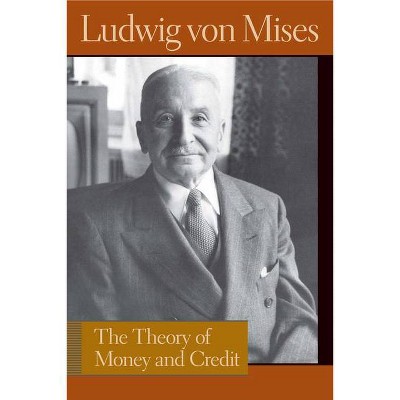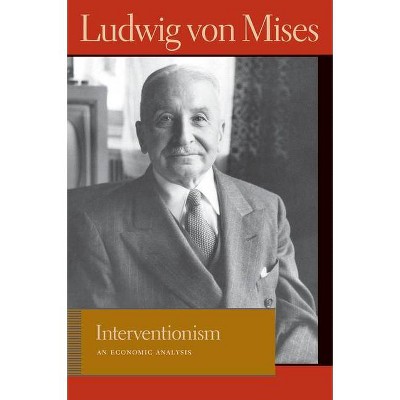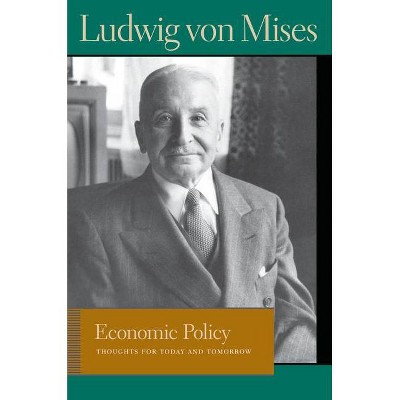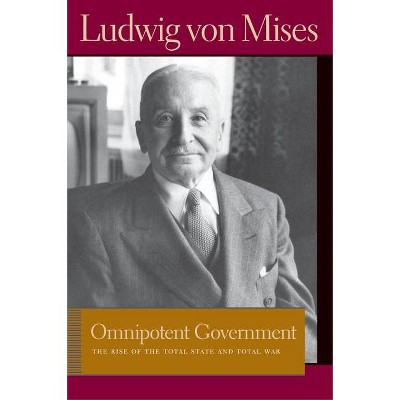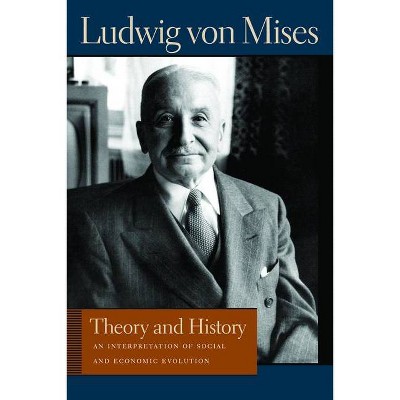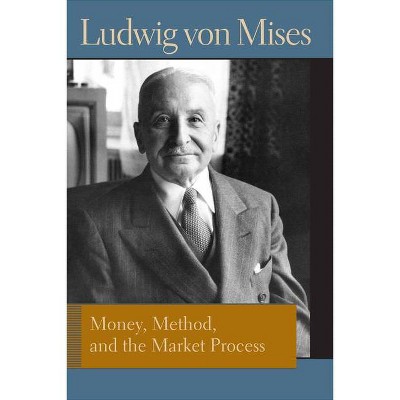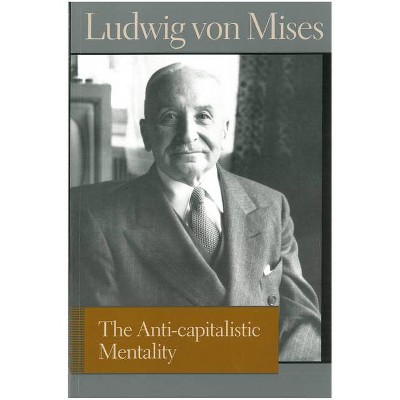On the Manipulation of Money and Credit - (Liberty Fund Library of the Works of Ludwig Von Mises) by Ludwig Von Mises (Paperback)
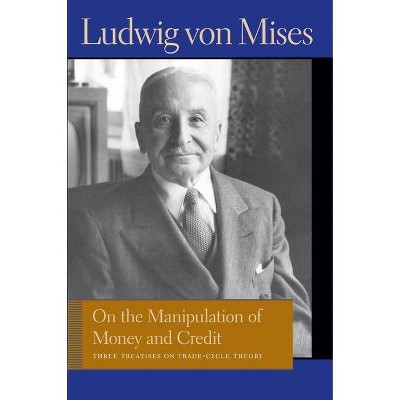
Similar Products
Products of same category from the store
AllProduct info
<p/><br></br><p><b> About the Book </b></p></br></br><P>The three treatises in "On the Manipulation of Money and Credit "were written in German between 1923 and 1931. Together they include some of Mises's most important contributions to monetary and trade-cycle theories and constitute a precursor to Mises's major work, "Human Action." In the first essay, "Stabilization of the Monetary Unit from the Viewpoint of Theory," written during the period of German hyperinflation, Mises discusses the consequences of the fluctuating purchasing power of paper money. He explores such ideas as the outcome of inflation, that is, the result of the increase in the amount of money, and an emancipation of monetary value from the influence of government.<P>The second essay, "Monetary Stabilization and Cyclical Policy," written in 1928, presents Mises's business-cycle theory. Published on the eve of the Great Depression, the treatise critiques schemes for stabilizing prices and for "measuring" purchasing power.<P>The third piece, "The Causes of the Economic Crisis," is a speech Mises delivered in 1931 exploring the nature and role of the market and cyclical changes in business conditions. He assesses the causes and effects of the crisis of the time and discusses various potential solutions to the problems of the Depression. <BR>Ludwig von Mises (1881-1973) was the leading spokesman of the Austrian School of economics throughout most of the twentieth century. He earned his doctorate in law and economics from the University of Vienna in 1906. In 1926, Mises founded the Austrian Institute for Business Cycle Research. From 1909 to 1934, he was an economist for the Vienna Chamber of Commerce. Before the "Anschluss," in 1934 Mises left for Geneva, where he was a professor at the Graduate Institute of International Studies until 1940, when he emigrated to New York City. From 1948 to 1969, he was a visiting professor at New York University. <BR>Bettina Bien Greaves is a former resident scholar, trustee, and longtime staff member of the Foundation for Economic Education. She has written and lectured extensively on topics of free market economics. Her articles have appeared in such journals as "Human Events, Reason, " and "The Freeman: Ideas on Liberty." A student of Mises, Greaves has become an expert on his work in particular and that of the Austrian School of economics in general. She has translated several Mises monographs, compiled an annotated bibliography of his work, and edited collections of papers by Mises and other members of the Austrian School.<p/><br></br><p><b> Book Synopsis </b></p></br></br><p>The three treatises in <strong><em>On the Manipulation of Money and Credit</em></strong> were written in German between 1923 and 1931. Together they include some of Mises's most important contributions to monetary and trade-cycle theories and constitute a precursor to Mises's major work, <em>Human Action</em>.</p> <p><strong>Ludwig von Mises</strong> (1881-1973) was the leading spokesman of the Austrian School of economics throughout most of the twentieth century.</p> <p><strong>Bettina Bien Greaves</strong> is a former resident scholar and trustee of the Foundation for Economic Education and was a senior staff member at FEE from 1951 to 1999.</p><p/><br></br><p><b> Review Quotes </b></p></br></br><br>Written between 1923 and 1946, the five essays in this collection examine the stabilization of the monetary unit and the causes of the German economic crisis after World War I. The superiority of the gold standard is a common theme. Bettina Bien Greaves translated the German essays in 1978 for their initial English publication by Free Market Books.<br /><br /><i>Book News, Inc.<br /></i>October 2011<br /><br /><p>Mises's book is classic Mises. The writing is crisp and very straightforward. The conclusions, while deviating significantly from the Keynesian consensus reflect the consistent and persistent application of classical political economy and the early neoclassical theory of value and price to the area of money and credit and the economic analysis of crises. It is a work that should be read by economists who have an interest in the history of twentieth-century economic thought, as well as those who would like to get a readable introduction to the pre-Keynesian perspective on the theory and policy associated with the microeconomic analytics of macroeconomic disturbances.</p><p><b>Peter J. Boettke<br /><i>History of Economic Thought and Policy/ 2-2012</i></b></p><p>. . . . Throughout the book Mises alternates between explanations of economic theory and demonstrating the results in practice. He takes the reader through the philosophical arguments and rhetorical tricks of the Marxists and shows the results of such policies. He covers the collaspe of the Weimar Republic, how anti-Semitism was hitched to etatism and economic justifications, the rise of National Socialism, the results of central planning, and even how monetary systems and gold standard play into the operation world economies</p><p>www.whatwouldthefoundersthink.com</p><p>August 2011</p><br>
Price History
Cheapest price in the interval: 11.79 on October 22, 2021
Most expensive price in the interval: 11.79 on November 8, 2021
Price Archive shows prices from various stores, lets you see history and find the cheapest. There is no actual sale on the website. For all support, inquiry and suggestion messagescommunication@pricearchive.us
